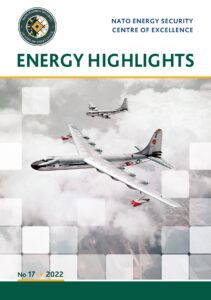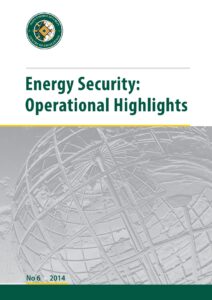
The clean energy transition is without a doubt one of the greatest challenges of the 21st century. The reasons for that
are myriad, complex and sometimes overlapping. There are significant challenges associated with some of the new and innovative energy technologies that could help to decarbonise hard-toabate sectors. And, due to a number of reasons, even some of the more established technologies have flaws that often are easily overlooked.
In addition to these technological problems, in some countries historical path dependencies can hinder the clean energy transition from gaining momentum. Or, alternatively, traditional energy security issues may at times divert some of the
attention that could otherwise be spent on making the energy systems greener.
This issue of Energy Highlights will tackle some of these challenges head on.
In their contribution, Dr. Jutta Lauf, Wsewolod Rusow and Dr. Reiner Zimmermann examine the utility of nitrogen-based fuels. They argue that these fuels have significant advantages over carbon-based fuels because they do not emit greenhouse gases or any other hazardous compounds during combustion. While the authors agree that it may take a while before nitrogen-based fuels can become adopted on a wider scale, they are confident that in the near future these fuels could play a meaningful role in the global decarbonisation effort.
Meanwhile, in his piece Thomas Troszak examines the environmental impact of solar photovoltaics (PV) production. More specifically, the author introduces the readers to the many types of fossil fuels that are used in PV production and
notes how some other environmentally hazardous inputs are required before the delivery of a solar PV array can take place.
In the third article, Camille Fourmeau, Nicolas Mazzucchi and Dr. Reiner Zimmermann analyze Australia’s energy transition challenges and its implications for the country’s military. The authors place particular emphasis on the difficulties Canberra faces while trying to reconcile its current dependency on fossil fuels, the negative implications of climate change and the urgent need
to expand investments in renewable sources of energy.
Finally, Justinas Juozaitis explains why it is important for the Baltic States to disconnect their power systems from the Soviet-era BRELL power grid and to synchronize with the Continental European Network. The author not only provides a comprehensive account of the historical development of the BRELL grid, highlights the synchronization significance for Baltic energy security, but also points out how Russia and Belarus have been pursuing various strategies to deter the Baltics from leaving the
BRELL grid.
In the end, we hope that these articles would provide you, the readers, not only with a better grasp of the clean energy transition challenges that many governments face, but would also inspire you to be part of the change.
By COL Romualdas Petkevičius (LTU-AF)
Director of the NATO ENSEC COE
“Nitrogen based propellants as substitute for carbon containing fuels” by Dr. Jutta Lauf, Wsewolod Rusow and Dr. Reiner Zimmermann
“The hidden costs of solar photovoltaic power” by Thomas A. Troszak
“What to expect from an energy transition for Australia’s energy security and its Defence Force?” by Camille Fourmeau, Nicolas Mazzucchi and Dr. Reiner Zimmermann
“The Synchronization of the Baltic States’: Geopolitical Implications on the Baltic Sea Region and Beyond” by Justinas Juozaitis





























